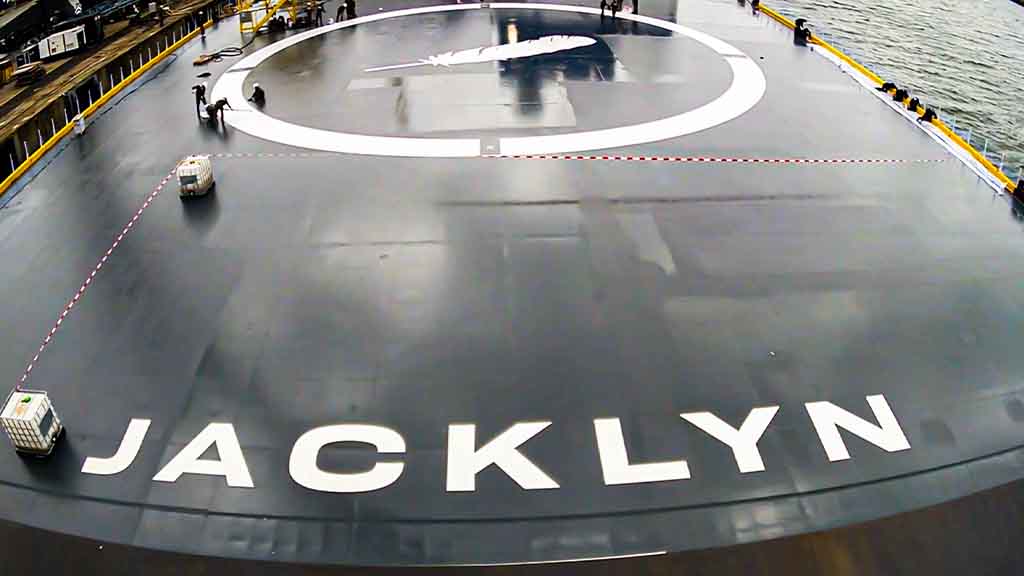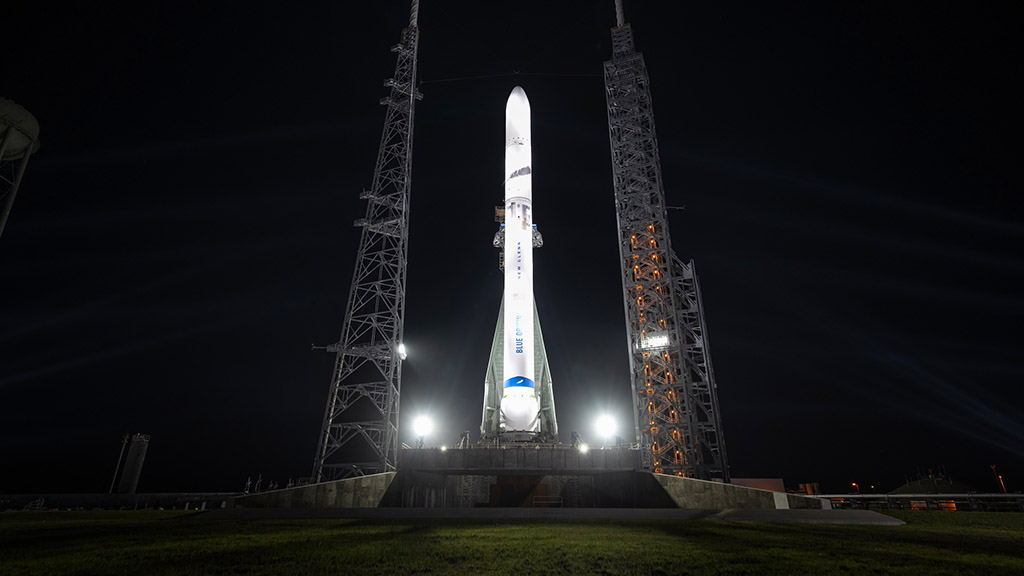Blue Origin
Jacklyn: Meet Blue Origin’s first rocket landing droneship

Blue Origin has shared the first visuals of the Jacklyn, its first-ever reusable rocket landing droneship that could be functional by next month.
The image shows the droneship deck with different equipment and a landing zone area painted with Blue Origin’s logo. Onboard work suggests that the barge is still under development but it’s in the final stage.
Droneships are autonomous barges deployed in the ocean to recover the first stage of launch vehicles. These are designed with advanced navigation systems and propulsion capabilities to maintain precise locations.
Welcome home, Jacklyn. This sea-based landing platform is where New Glenn’s reusable booster will return home again and again after each mission to quickly refurbish for its next flight. pic.twitter.com/j0aMorEn9d
— Blue Origin (@blueorigin) September 4, 2024
The architecture can withstand the impact of a landing booster. Once landed, the barge is transported to the nearest refurbishment facility for maintenance and preparation for the next flight.
For now, Blue Origin’s New Shepard rocket is a single-stage rocket, which is fully reusable. However, it has limitations and doesn’t work like a space cargo vehicle.
On the other hand, rival SpaceX has been using a droneship since 2015 and already performed many reusable booster landings in the sea.

Blue Origin’ Jacklyn Droneship (Source – Blue Origin
New Glenn
A week ago, Blue Origin announced the first flight of its heavy-duty New Glenn rocket. This is a two-stage space vehicle and consists of a reusable booster.
The first stage uses seven BE-4 engines filled with liquid oxygen fuel. Each can generate 550,000 lbf (2,450 kN) of thrust at sea level with deep throttle capability.
New Glenn will use this power to liftoff the rocket into the upper atmosphere and perform a hot staging to send the booster back to Earth.

Blue Origin New Glenn Launch Vehicle at Launch Complex 36 (LC-36) (Credit: Blue Origin)
While maintaining its trajectory, the first stage will descend toward the droneship. During the final burn, the first stage will deploy landing legs and touchdown on the deck. Thus concluding the mission.
The first flight for New Glenn is targeted no earlier than October 13 and will carry NASA’s ESCAPADE (Escape and Plasma Acceleration and Dynamics Explorers) orbiter satellites. Learn more below.
(source)












